- Details
- Written by dave
- Category: Hawaii, New Zealand, Thailand Based Years
- Hits: 5403
So my orders sent me to the 25th Infantry - the Tropic Lightning - Division stationed at Schofield Barracks on the island of Oahu.
The next three years would prove to be interesting for a number of reasons. Firstly I would serve in a new type of combat organization, formed in 1957 while I was at West Point, called Battle Groups. That was a substitute for the traditional Army Regiment - smaller, more nimble, and designed to be able to fight more effectively on the Nuclear-weapons dominated battlefield. Especially on the Plains of Europe.
It was called the 'Pentomic Army Structure ' and the 25th Division was organized as a Pentomic Division.
The standard infantry division, with three Regiments, each with 3 Battalions was seen as being too clumsy in its fixed organization.
So in the Pentomic structure units were organized in a system of "5's". A Division was organized with five "battle groups", each commanded by a colonel. Each battle group consisted of five line (rifle) companies, a combat support company, and a Headquarters company. Each company was commanded by a captain.
Artillery battalions were organized with five batteries—four were howitzers, the fifth was a mortar battery. The addition of small "Davy Crockett" weapons with atomic warheads brought the army into the nuclear age.
One problem that gave the Army was that without traditional Regiments whose lineage went back to the Revolutionary War, there had to be a way to preserve the traditions. So, while the 25th Infantry Division, almost always stationed in the Pacific - the 'Tropic Lightning" Division, its Battle Groups were given traditional names.
I was first assigned to the 35th Infantry- 'Cacti' Battle Group.
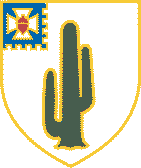
The 35th Infantry Regiment was formed in Arizona in 1916 - thus the 'Cacti' Regiment. It was formed from units who had fought Pancho Villa along the Mexican Border under General John J Pershing, around 1915.
I was assigned - for only several months - as the Commander of Company "B" of the Cacti Battle Group. All I remember during that period was that we did a fair amount of field training in the highly restricted areas of Oahu.
And I had to attend, with other company grade officers, classified instructions on how to operate against European style enemy forces, while we were supported by small, recoilless-launched ''Davy Crockett' nuclear weapons which would generate a 10 to 20 Ton of TNT explosion. Or under the 8 Inch artillery Division-level nuclear round fires.
NCO Academy
Then, probably because of my combat record as a junior officer in the Korean War, and having gone through spit and polish West Point, I was selected to command the 25th Division's 'NCO Academy'
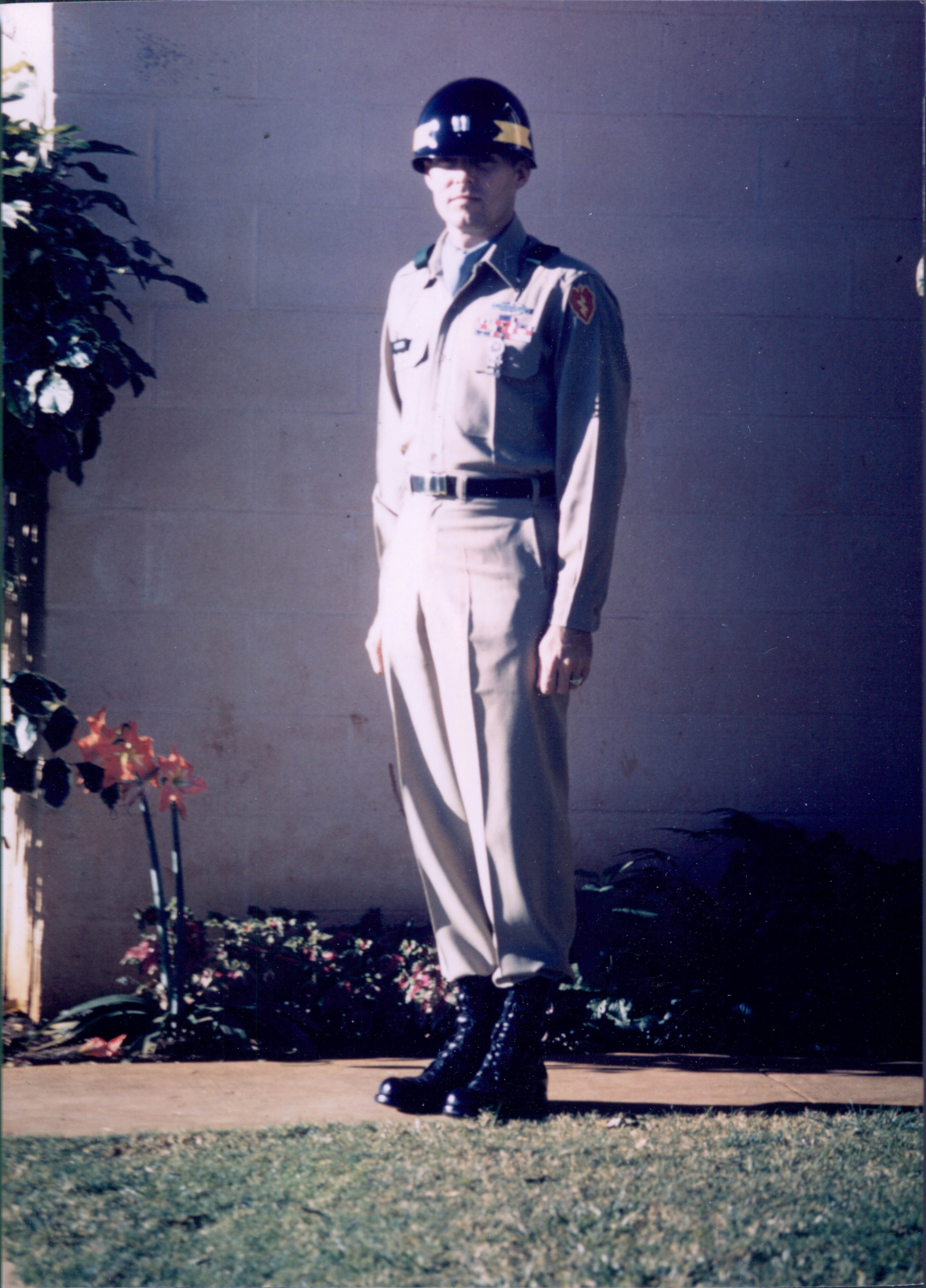 |
Now NCO Acadamies have often been created at the Division level by commanders. They are not standard Army Units, but they serve a useful service in teaching NCOs, usually at the E-5 to E-6 level a wide variety of skills, coupled with 'leadership training'. The NCO's came from all types of Divisional units - infantry, artillery, armor.
It was a very independent small command for me - with 3 officers, and about 14 crackerjack NCO's as the Cadre. Which taught about 100 NCO students for six week long 'courses' with the greatest stress on 'leadership' as exercised during operations, physical fitness and with emphasis of spit-and-polish appearance while in uniforms. They then graduated in a ceremony and got a letter in their file showing they had attended and graduated satisfactorily. A feather in their promotion file.
 |
It was there that a Notre Dame outstanding ROTC Graduate, Lt Burt Lesh, was assigned to my Academy. For the year I commanded the NCO Academy, he and his wife got to know Patsy and I and 12 years later while I was a Brigade Commander he became one of my Battalion Commanders.
One of my other officers was, in his normal unit, a loser. He was sent to me, I suppose, to straighten him out - while yet he was one of my officers who was supposed to be providing a 'model' for the NCOs. He was ok, but surprisingly impractical. When time for me to fill out his efficiency report, I gave him some mild credit and said he was a 'late bloomer.' To my surprise, the Assistant Division Commander of the 25th - Brigadier General Vernon Mock - who was the 'endorsing' officer to my 'rating officer' comments took issue with that phrase - saying that 'late bloomer' only really could be applied to much older officers.
It was not the last time I would run into Mock.
- Details
- Written by dave
- Category: Hawaii, New Zealand, Thailand Based Years
- Hits: 3803
The Wolfhounds
After my brief but illuminating assignment with the New Zealand Army I was promoted to Major, and was snapped up by a real field soldier Colonel Bill McKean who commanded the 27th Infantry Battle Group of the 25th Division. He wanted me for his 'S-3' plans and operations officer.
The 27th Infantry 'Wolfhound' Battle Group was originally a Regiment, formed in 1901 to operate in the Philippines to put down the Insurrection on Mindinao.
But it got its 'Wolfhound' name and a Russian Wolfhound head profile on its Regimental Crest, from being part of the American Expeditionary Force sent to Siberia in 1918, landing at Port Arthur (today's Dalian, China) and fighting with the 'White Russians' (loyal to the Czar) and their Admiral Kolchek to stem (fruitlessly) the Bolshevik Communist Revolution coming into the Far East of Russia.
The Bolshevik Forces admired the 27th Infantry troops enough while fighting them, they nicknamed them the 'Wolfhounds' - after the Russian iconic dog.
The name stuck, and a Wolfhound's head in profile is part of the official Regimental Crest. With the motto "Nec Aspera Terrent" - Hardships Do Not Deter Us, which irreverent soldiers whose Latin is a little fuzzy, branded it as "Don't forget the Dog Food."
A white large Russian Wolfhound is also the pet of the Wolfhounds in Hawaii, and his name is 'Kolchak'
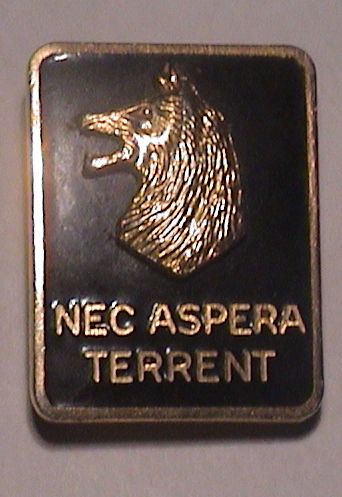
My assignment as S-3 - or 'Operations Officer' of a combat arms battle group was a significant step up in my military career.
My one chance to visit the 'Big Island' of Hawaii - which still has an active volcano - came while I was the S-3. It was just a training planning trip, but I well remember walking through the Lava fields while there. And realizing how difficult it would be to maneuver an Infantry company or battalion over such 'ground.'
The irony of being in a Battle Group, optomized for fighting a conventional war with nuclear weapons support, was that the war we were about to fight would be neither conventional nor nuclear.
- Details
- Written by dave
- Category: Hawaii, New Zealand, Thailand Based Years
- Hits: 4968
Thailand and Future Wars
It was ironic that, after West Point I was assigned to Hawaii's 25th Division which was organized Pentomically for readiness for either a European high tech conventional and/or nuclear war, while the war we were about to enter would be about as low tech - guerilla, terrorist, counterinsurgent , Asiatic - warfare as one could get.
So as soon as I joined the 27th Infantry Wolfhound Battle Group we were ordered to prepare for and participate in Operation Air Cobra to be held in Thailand. It was to be a SEATO (South East Asia Treaty Organization) exercise to better prepare for actual combat against Communist guerillas.
As luck would have it, the Commander of the 27th was about as prepared as anyone. Colonel William McKean was 43 when I joined his staff as a Plans and Operation Major. He had landed with the Normandy landing, was wounded four times before he was pulled back to England. He had won 2 Silver Stars by then. Most of his career has been with troops, with only interludes for military courses as he climbed the promotion ladder.
It was obvious to me soon after I joined the Wolfhounds that the men were devoted to him. He always took care of them. And his wife Louise made sure the young wives of the 1,000 soldiers in his command were taken care of also.
In my Wolfhound Uniform - with Crest on Jungle Cap
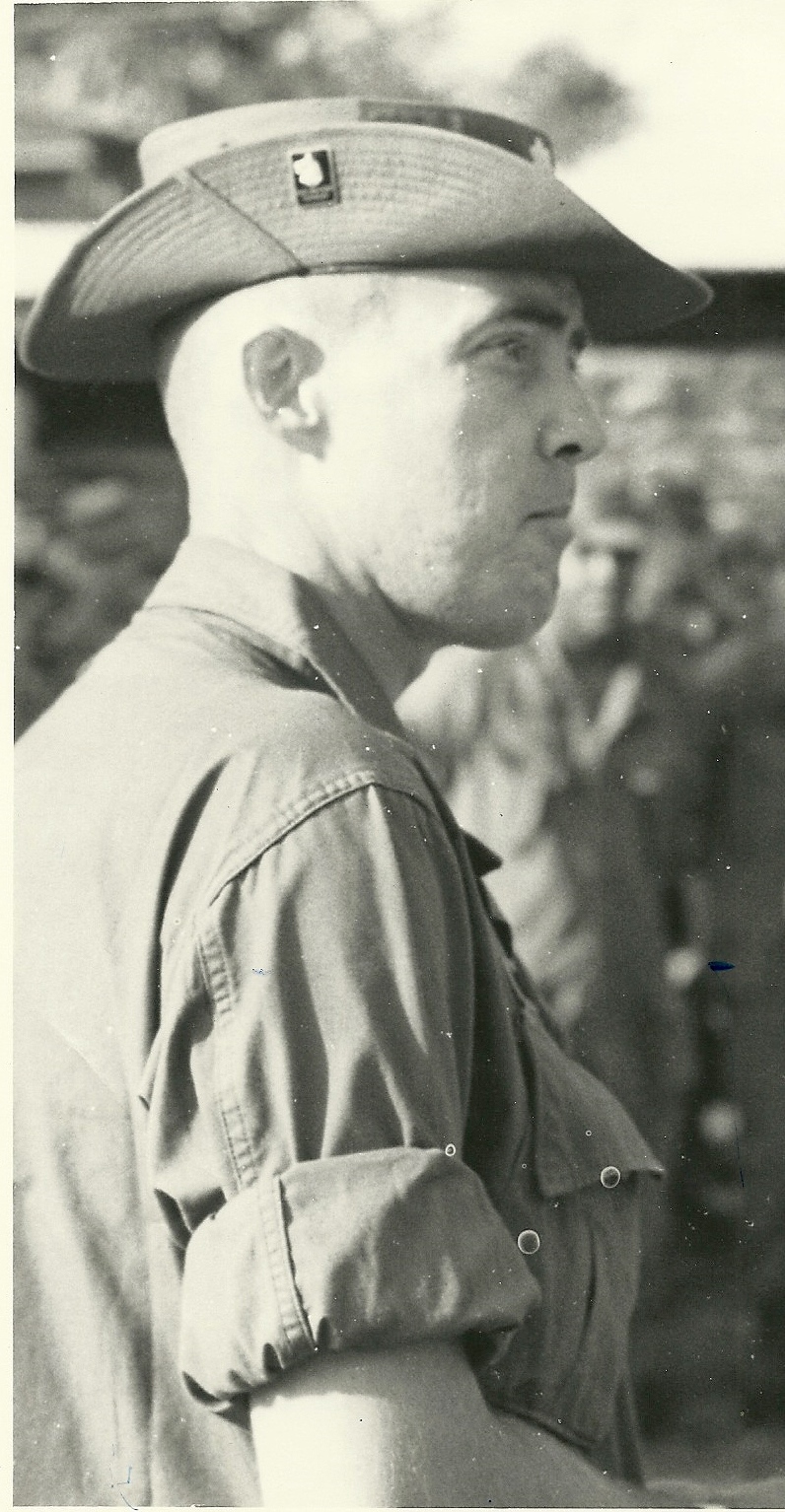
Operation Air Cobra
The Air Cobra Exercise involved 5,000 men. The 27th Infantry and US Special Forces component was joined by Air Force and other Units from the US, Britain, Thailand, Australia, and France.
It was designed to exercise rapid deployment and resupply of forces by air, including supplying Thai and US Special Forces deep into the jungle areas which surrounds Thailand, as they cope with Communist guerilla forces that threaten the Kingdom of Thailand as they already were penetrating into South Vietnam.
Part of the operation would get US and other Western military familiar with the country, its air bases such as Udorn, which would be key in any future operations, and give our troops a taste of operating in deep, cobra snake infested jungles - which would be the home of communist guerillas operating across borders.
I took my operations staff into one jungle area to encamp over night. We would try out hammocks designed to permit the soldiers to sleep up off the jungle floor.
A humorous incident involving me happened one night. I put up my mosquito equipped hammock and got into it within a deep jungle patch we marched to, using machetes to cut through vines. I had my loaded .45 Caliber service pistol on my chest as I slept on my back.
Somehow in my restless thrashing around after going to sleep I managed to flip myself upside down so my face was looking at the jungle floor and its critters, my loaded pistol was trapped between my chest and the netting. I had a hell of a time getting out of the netting and had to put my bootless feet on the ground before I got properly back into the hammock. The NCOs in their hammocks nearby heard me cursing and using my flashlight attempting to get out, and they started laughing as their Major 'leader' was screwed up in his hammock - being fair game for either King Cobras or Guerillas.
I doubted that I would want to bivouac near enemy guerilla country sleeping in vulnerable hammocks 3 feet off the ground, cobras or not.
Took me a few days to live that one down. I got back a bit by taking my section on a short forced march in the heat to see how we handled water discipline and the malaria pill distribution.
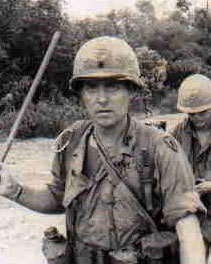
Our key personnel were flown into one of the most dangerous but interesting corners of Thailand - Chiang Mai - in the northwest corner of the country bordering on Burma, Laos, Thailand and China. Close to the largest jungle based drug trade AND lawless wilderness.
It was also a place famed for its Silversmithing. So I was able, hastily, to buy and bring back a beautiful beaten-silver Buddhist Monk Begging Bowl. It is a prized possession in our China Cabinet.
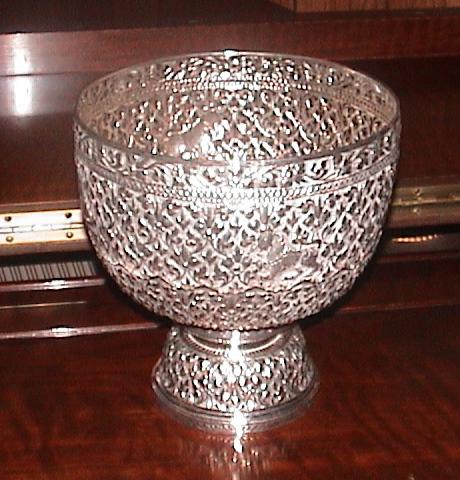
Lessons Learned
As the exercise came to an end. the Thai Army Chief of Staff made a final speech about the lessons learned. He pulled no punches on its shortcomings.
Here is the cover of his multi-lingual printed farewell speech.
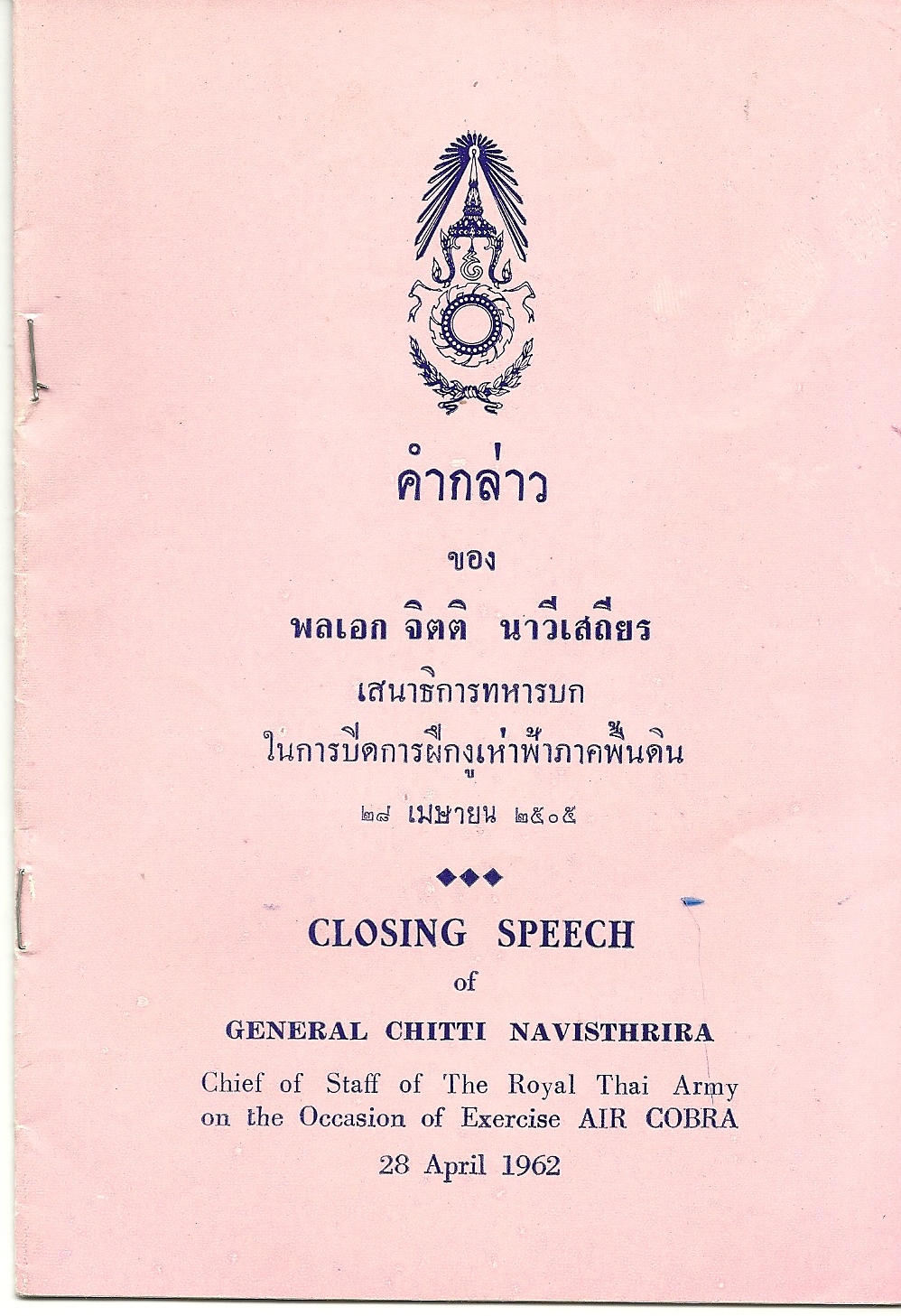
And he issued a joint Thai-US Commander's letter to the troops about the exercise and with one line I like '...whereas no war is complete without a celebration ----' I.e. he was signaling we should have a party.
Click on this URL and it will come up as a PDF file.
He also distributed individual 'award' certificates to our key officers, including this one for me. (you click your mouse over the image below it will expand)
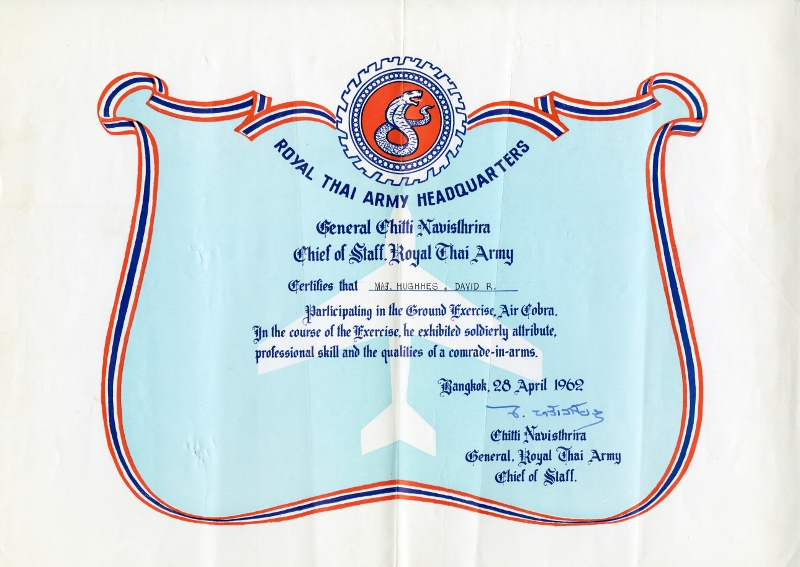
I learned several things from that brief excursion into Thailand.
That Kingdom seems to be a very cohesive society - I can't see that Communists could make very deep inroads into its political culture. While there certainly are poor rural peoples, and very remote jungle areas, the majority of the people, particularly in the dense urban cities seem coalesced around some unique core values - the most dominant of which is their pervasive Buddhism followed by their reverence and loyalty to their King - who is no dictator.
It is a very pretty country with its ancient temples, peaked images, colorful and ubiquitous monks, with their begging bowls. Their visible culture - long called Siam - is really well rendered in the Broadway play "The King and I."
I saw just enough that I wanted to come back, and at least visit Bangkok again. If only to pick up artifacts like Tomb Rubbings, carved ivory and metal images, for Patsy's and my home.
I did so, during my 5 days R&R during the Vietnam War I was headed into, sooner or later.

While I was still in Thailand, waiting for our air transportation back to Hawaii, I wrote a long piece for the general public about "The Battle Before the War Begins" in which I accurately portrayed what was going to happen in Thailand - a communist Insurgency - which was already heating up in South Vietnam.
In it there I spelled out the kind of pre-emptive efforts in the Thai 'countryside' - amounting to the same kind of 'counterinsurgency' efforts that the Thai government - supported by the US that was not sufficiently done in Vietnam, whose 'war' is already going on.
It also detailed the necessary strategy that it will take to defeat insurgencies - actions to win hearts and minds - 40 years before just such a strategy had to be used effectively to put down the Insurgency in Iraq after our conventional troops got there in 2003.
It was a long piece, printed full text in the Denver Post and other publications June 10th, 1962.
Departing Hawaii
Almost as soon as I got back to Oahu, it was time to pack up and head for the Mainland, get to Fort Leavenworth, Kansas, where Army wisdom said I needed to attend the Army's Command and Staff College for a year, and NOT be permitted to stay on the lovely Hawaiian beaches for a 4th year. Which, if I had not been considered an Army 'comer' - potential hot shot - I would have been able to take advantage of. And loll about the beaches.
Cest la Guerre
To continue with my Military Years click… NEXT, Fort Leavenworth Year (1)
- Details
- Written by dave
- Category: Hawaii, New Zealand, Thailand Based Years
- Hits: 3869
The New Zealand Army
As I was concluding my time running the NCO Academy, I was designated to go - as an exchange officer - to take a Tactics Course with officers in the New Zealand Army. Strictly speaking, the 'exchange' was supposed to be on the basis that the US Army in Hawaii would give a New Zealand officer a year in command of a rifle company of the Division, and the US Officer would get the same in New Zealand. So that they each could learn how the other Army functioned up close and personally. But the New Zealand Army was so small, that they settled on the idea that I should take their Tactics Course along with NZ officers. That would be shorter - only three months. But that would permit me to become knowledgable of how their Army was organized and operated at the 'tip of the spear'. So if or when our Armies in the Pacific ever had to fight in the Pacific Theater together our key officers would be better able to coordinate our joint officers.
So I flew from Honululu on Quantas Airlines, first into Sidney, Australia, then with no lay over, into Aukland, New Zealand on the north Island.
I was not sure what to expect until I was driven up to Camp Waioru high in the 'tussock' and sheep grazing country. Waioru's main function was the support of the New Zealand Armor units - such as they had. The entire NZ Army is less than 7,000 soldiers.
I was warmly greeted by the handful of officers who run the camp, and staff the small Army school. I don't think we had more than 10 officers taking the 'Staff and Tactics' Course that I was to attend.
I learned that the New Zealand Army which served in North Africa and Greece against the Germans in the early 1940's took so many casualties - some 7,000 killed,and captured, or wounded, in WWII that was a national calamity. That was on top of the 16,000 killed in WWI, with 41,000 wounded. They only had 45 killed in the Korean War, and 37 in the Vietnam War. Ever since those two world wars the people and government of New Zealand have been very cautious about committing its forces to violent combat.
I learned - of course it was obvious - that their Army was modeled and equipped like the British Army. And as such, tactically, for lack of highly mechanized, ample weapon and ammunition equipped American Army, they have to populate the ground rather than overwhelm by firepower. Big difference from my experience in Korea, where we substituted firepower for people. Industrial America can afford that.
The officers who took the class with me were fully aware of just how highly combat decorated I was and how much actual combat experience I had compared with them.
Their staff and tactics work was, as far as I could see, quite professional. But I didn't learn anything of much value to me professionally while I was there.
What I DID learn was how hard they drink - and 'play' - which is very rough and tumble, even in the officer's club. For they believe in such 'play' as a way to toughen up their junior officers, even to the point of throwing each other through the windows of the club on weekly party night. Then they are accustomed to pay for the damages to the club they cause, without complaint, the next morning. New Zealand Army Officer Culture.
I was pulled into many of their 'games', and found myself quite drunk a number of times. Their officers go back to the hardest drinking western US customs.
The one geographically significant item I learned that New Zealand could have been, except for the sea, a mirror of early Colorado. The same population, the same number of square miles, the same weather (latitude), and the same reliance on sheep and herding that Colorado had in the 1880-1910.
But THE big surprise came when I learned that New Zealand has an abundance of TROUT, just like Colorado. Really BIG trout.
I learned that trout were not native to New Zealand. But Western writer, Zane Gray, after he made a lot of money traveled to and liked New Zealand. So he paid for several shiploads of live Rocky Mountain Trout to be sent to New Zealand which had none. The trout population exploded, and has been THE fresh water game fish ever since.
I really enjoyed being taken fishing by those NZedders as they are called, where I caught larger trout than I ever would have in my home state of Colorado.
The only other memorable thing that happened, was that I found, in Aukland, in a Military Uniforms store, the Greek Cross of War with Crown ribbon. The Greeks served with the New Zealanders in WWII, and one Greek Infantry Battalion served in our 7th Cavalry Regiment in the Korean War. I was awarded the Greek Cross of War, Class C, by the Greek Battalion Commander in 1951 during heavy combat against the Chinese when I helped them rescue a cut-off company. But they didn't have a supply of medals or ribbons to give me, to accompany the typed Citation, which I still have. But I still have the ribbon with Crown.
I have always prized it, because I saw that the Greek Soldiers and Officers who served next to us in Korea were really top drawer Combat Soldiers.
